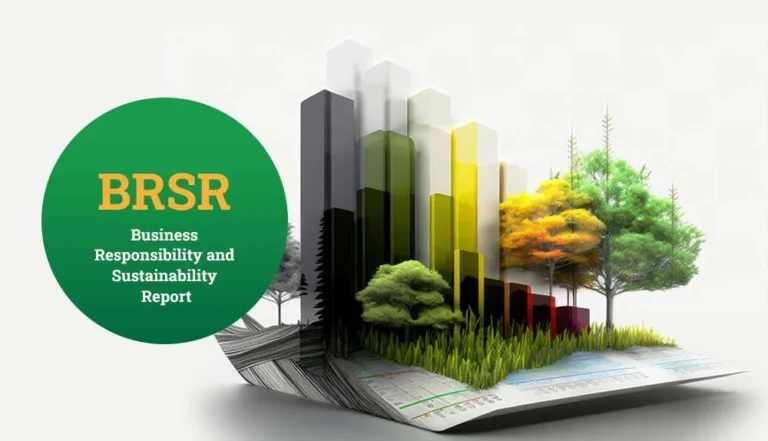BRSR 2025: Must‑Know ESG Mandate for India’s Top 1000

Introduction to BRSR
As India moves toward sustainable capitalism, one acronym is reshaping corporate ESG narratives—BRSR. Short for Business Responsibility and Sustainability Report, BRSR is now a central compliance requirement for India’s top listed companies.
This article breaks down everything CA students and finance professionals need to know about BRSR—from its definition and timeline to its corporate implications and preparation steps for compliance in 2025.
What is BRSR?
BRSR stands for Business Responsibility and Sustainability Report, introduced by the Securities and Exchange Board of India (SEBI) as an evolution of the earlier Business Responsibility Report (BRR). While BRR focused mainly on responsible business practices, BRSR integrates broader Environmental, Social, and Governance (ESG) disclosures.
From FY 2022–23, BRSR reporting became mandatory for the top 1,000 listed companies in India based on market capitalization. The shift aims to standardize sustainability disclosures, enabling investors and regulators to make more informed decisions.
Unlike BRR, BRSR emphasizes measurable metrics, requiring firms to report quantitative and qualitative data on sustainability, diversity, emissions, energy use, and governance structures.
BRSR Formats & Timeline
BRSR offers three formats based on disclosure maturity and scope:
1. BRSR Lite
Ideal for smaller companies or early adopters, this format includes basic disclosures.
2. BRSR Comprehensive
Mandatory for the top 1,000 companies. It features detailed ESG indicators and governance disclosures, ensuring alignment with global frameworks like GRI and TCFD.
3. BRSR Core
Introduced by SEBI for phased implementation from FY 2023–27, this version requires value-chain level disclosures. It ensures that sustainability efforts extend beyond the organization to suppliers and partners.
Implementation Timeline:
| FY Year | Milestone |
|---|---|
| 2021–22 | Voluntary adoption begins |
| 2022–23 | Mandatory for top 1,000 listed companies |
| 2023–24 | BRSR Core pilot implementation starts |
| 2024–25 | Gradual extension to value-chain disclosures |
| 2025–27 | Wider rollout and possible SME inclusion |
Why BRSR Matters for Indian Corporates
BRSR is more than just a reporting format—it’s a strategic shift in corporate governance and investor engagement.
Enhancing Transparency and Trust
With clearly defined metrics, BRSR fosters data-driven transparency, boosting investor confidence. Companies showcasing robust ESG credentials are more likely to attract long-term capital.
ESG Integration into Strategy
By aligning business models with sustainability goals, companies strengthen stakeholder relationships and future-proof operations.
Case Impact
A leading manufacturing firm reported a 12% drop in emissions within a year of tracking BRSR metrics.
Another IT company improved gender diversity by 15%, enhancing its social performance score.
These examples reflect how BRSR drives internal improvements while improving public perception.
Impacts & Challenges for Companies
Despite its benefits, BRSR adoption comes with operational hurdles:
1. Data Collection & Standardization
Gathering ESG data across departments and units is resource-intensive. Without robust internal systems, consistency becomes a challenge.
2. Assurance Requirements
SEBI has encouraged external ESG assurance for credibility. This requires companies to partner with third-party auditors and improve internal audit readiness.
3. Board Involvement
Corporate boards must take ownership of BRSR reporting, integrating ESG risks into risk management and strategic planning.
How CA Firms & Corporates Can Prepare
Chartered Accountants are key enablers in the BRSR journey. Here’s how both firms and corporates can gear up:
1. Follow SEBI’s BRSR Checklist
Use SEBI’s detailed BRSR format to identify disclosure gaps and set up tracking mechanisms early in the financial year.
2. Leverage Reporting Tools
Platforms like Arbor.eco, EY’s BRSR framework, and Deloitte ESG dashboards offer data consolidation and reporting features aligned with SEBI guidelines.
3. Coordinate Across Ecosystem
BRSR Core requires value-chain reporting. Engage with suppliers and service providers to build ESG awareness and reporting culture across the ecosystem.
4. Build Assurance Capability
Partner with ESG consultants or train in-house audit teams for ESG assurance readiness.
Conclusion
BRSR is no longer optional—it’s a strategic imperative for Indian corporates navigating the ESG era. For CA professionals and financial teams, mastering BRSR is about compliance and unlocking stakeholder trust, investment readiness, and long-term growth.
Stay ahead—get BRSR-ready by 2025.